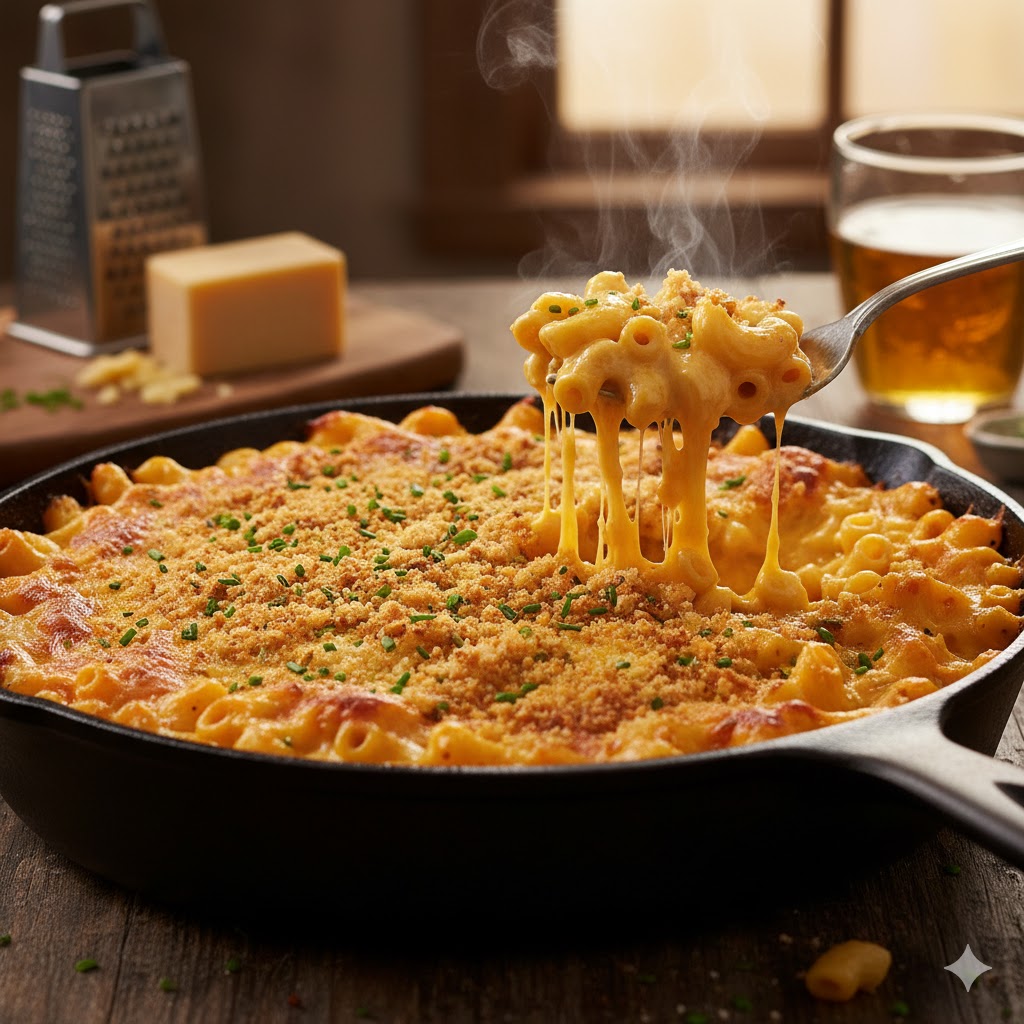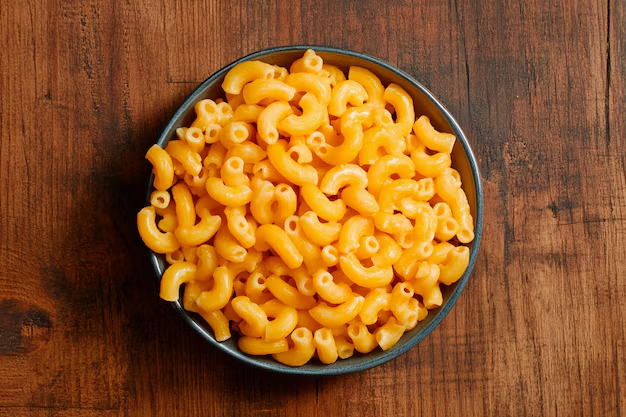
The Golden Comfort: An Ode to Macaroni & Cheese
I. Introduction: The Universal Embrace (Word Count Target: 100-150)
- Hook: Start with a sensory description of the perfect mac ‘n’ cheese.
- Thesis: Mac ‘n’ Cheese is more than a dish; it’s a cultural icon, a symbol of comfort, and a culinary canvas.
- Brief History Tease: Mention its ancient/elite origins before its modern popularization.
II. A History in Three Acts: From Elite to Everyday (Word Count Target: 200-250)
- Act 1: The European Roots: Mention early pasta and cheese dishes (e.g., in medieval Italy/France). Discuss the earliest known recipes (e.g., Liber de Coquina, 14th century).
- Act 2: The Jeffersonian Connection: Detail how Thomas Jefferson brought a “macaroni machine” and a recipe back from France, popularizing it among the American elite.
- Act 3: The Depression Era Game-Changer: Focus on the introduction of Kraft Dinner in 1937, making it cheap, non-perishable, and accessible to the masses, cementing its status as a staple.
III. The Anatomy of Comfort: Science & Technique (Word Count Target: 200-250)
- The Perfect Noodle: Discuss preferred shapes (elbows, shells, cavatappi) and why they hold sauce well.
- The Cheese Sauce (The Roux & Bechamel): Explain the classic French base (roux + milk = béchamel) and how adding cheese creates Mornay sauce.
- The Chemistry of Meltdown: Explain why aged cheddar is tricky and why processed cheeses (like Velveeta or American) or emulsifying salts are sometimes needed for a perfectly smooth, non-grainy sauce.
- The Topping: Discuss the textural necessity of a crispy breadcrumb/panko topping.
IV. Regional & Creative Variations (Word Count Target: 200-250)
- Baked vs. Stovetop: The fundamental divide.
- The Southern Soul Food Style: Use of sharp cheddar, evaporated milk, and baking until firm (a “macaroni pie”).
- The Gourmet Renaissance: Incorporating high-end cheeses (Gruyère, Smoked Gouda), luxurious additions (truffle oil, lobster), and sophisticated spices (mustard powder, paprika).
- International Echoes: Mention similar dishes in other cultures (e.g., Kasespaetzle in Germany/Austria).
V. Conclusion: An Unending Love Affair (Word Count Target: 100-150)
Final Thought: A sensory closing line about the feeling of taking the first bite.
Reiterate the Theme: Mac ‘n’ cheese’s enduring power lies in its simplicity and versatility.
Modern Context: Discuss its presence on high-end menus and as a beloved food truck staple.
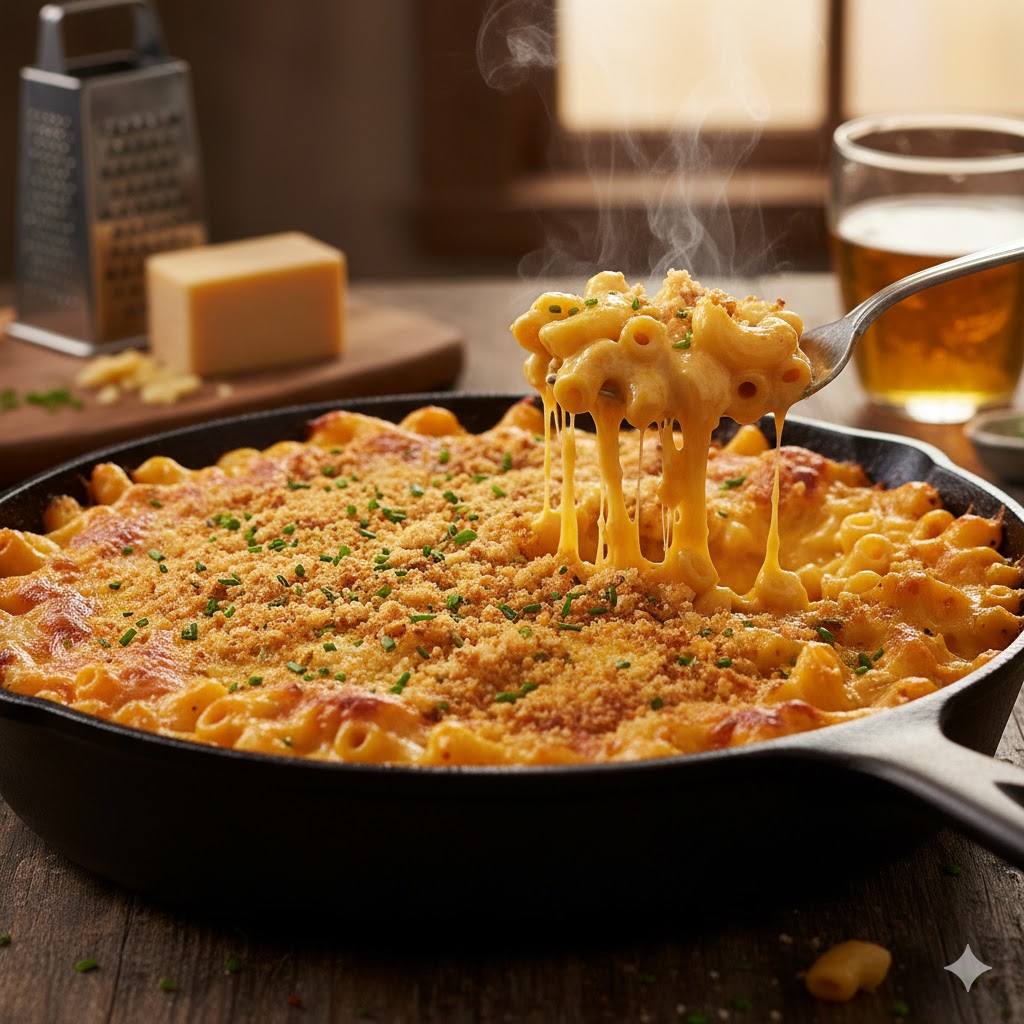
The Golden Comfort: An Ode to Macaroni & Cheese
There are very few dishes on earth that carry the same comforting weight, the same nostalgic warmth, as a bowl of Macaroni & Cheese. Close your eyes and picture it: the velvety, thick sauce of brilliant gold; the plump, perfectly curved macaroni shells drowning in a sea of cheddar; and the promise of that first, deeply satisfying, cheese-stringing bite. It’s a dish that transcends age, socioeconomic status, and even geography, acting as the ultimate edible security blanket. From a simple side dish served at a backyard barbecue to a truffle-laced indulgence on a five-star menu, Mac ‘n’ Cheese is more than just pasta and dairy—it is a cultural icon, a symbol of childhood, and an endlessly versatile culinary canvas.
To trace the lineage of this golden comfort is to traverse centuries and continents. While many assume its origin is purely American, the concept of baked pasta and cheese has roots stretching back to medieval Europe. One of the earliest credible recipes appears in the 14th-century Italian cookbook, Liber de Coquina, which describes a dish involving parboiled pasta layered with grated cheese and butter. Variations flourished across Europe, but the dish’s true destiny lay across the Atlantic, thanks largely to one of the United States’ most distinguished gourmands: Thomas Jefferson.
Upon returning from his time as minister to France in the late 1780s, Jefferson brought home not just political philosophies but also a fervent appreciation for French cuisine. He imported a “macaroni machine” and served the now-famous dish at a state dinner, introducing the elite of early America to his exotic “macaroni pie.” It was a novelty, an expensive luxury reserved for the upper crust. This elite status, however, was dramatically shattered nearly a century and a half later by a simple, brilliant invention during the Great Depression. In 1937, Kraft Foods introduced its boxed Macaroni & Cheese Dinner—a non-perishable, two-serving meal that cost just 19 cents. Overnight, the aristocratic novelty became a working-class staple, cementing its place in nearly every American pantry and transforming it forever into the accessible, reliable, and deeply loved staple we know today.
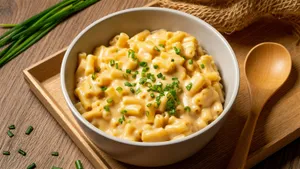
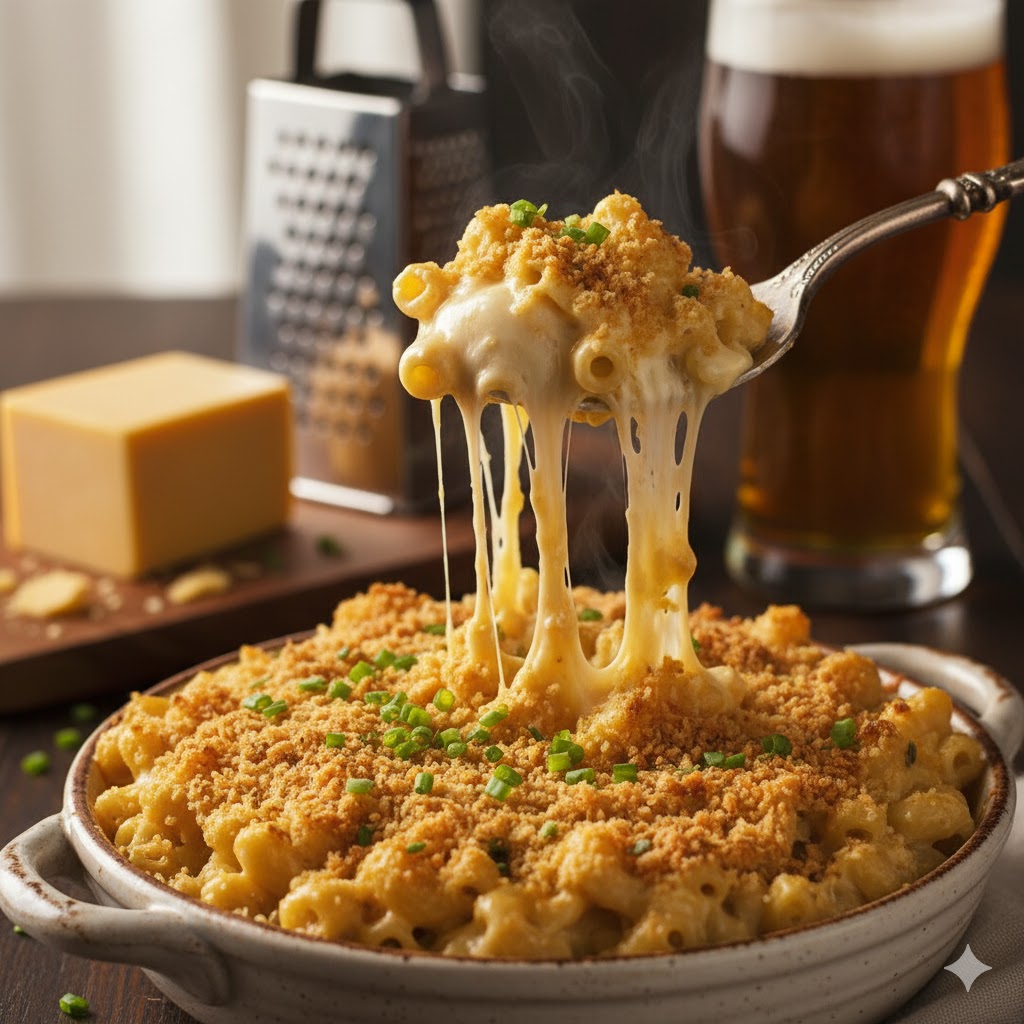
Frequently Asked Questions
Q1: What’s the best cheese for Mac ‘n’ Cheese?
1: There’s no single “best” cheese, as it depends on your preference! A sharp cheddar is classic for its flavor and color. For creaminess and melt, many chefs blend cheddar with cheeses like Gruyère, Fontina, or even a touch of American cheese. For a gourmet touch, consider smoked Gouda, Parmesan, or blue cheese.
Q2: How can I prevent my cheese sauce from becoming grainy or oily?
The key is a proper béchamel base (flour and butter roux + milk). Add shredded cheese off the heat, a handful at a time, whisking until smooth before adding more. Avoid high heat once the cheese is added. Using cheeses that melt well (like Gruyère, Fontina, or some processed cheeses) or incorporating a small amount of an emulsifying agent (like sodium citrate, or even a slice of American cheese) can also help ensure a silky-smooth sauce.
Q3: What kind of pasta works best for Mac ‘n’ Cheese?
Elbow macaroni is the traditional choice due to its ability to hold sauce within its hollow curves. Other excellent options include shells (conchiglie), cavatappi, penne, or campanelle, all of which have ridges or shapes that trap and carry the creamy sauce beautifully.
Q4: Should I bake my Mac ‘n’ Cheese or make it on the stovetop?
Both methods are delicious and offer different experiences! Stovetop Mac ‘n’ Cheese is quicker and typically results in a looser, very creamy sauce. Baked Mac ‘n’ Cheese develops a firmer texture, a delicious golden crust, and often features a crispy topping. Your choice depends on your desired texture and available time.

